Articles and Features
Looking ‘At’ Not ‘Through’. The Art of Stained Glass
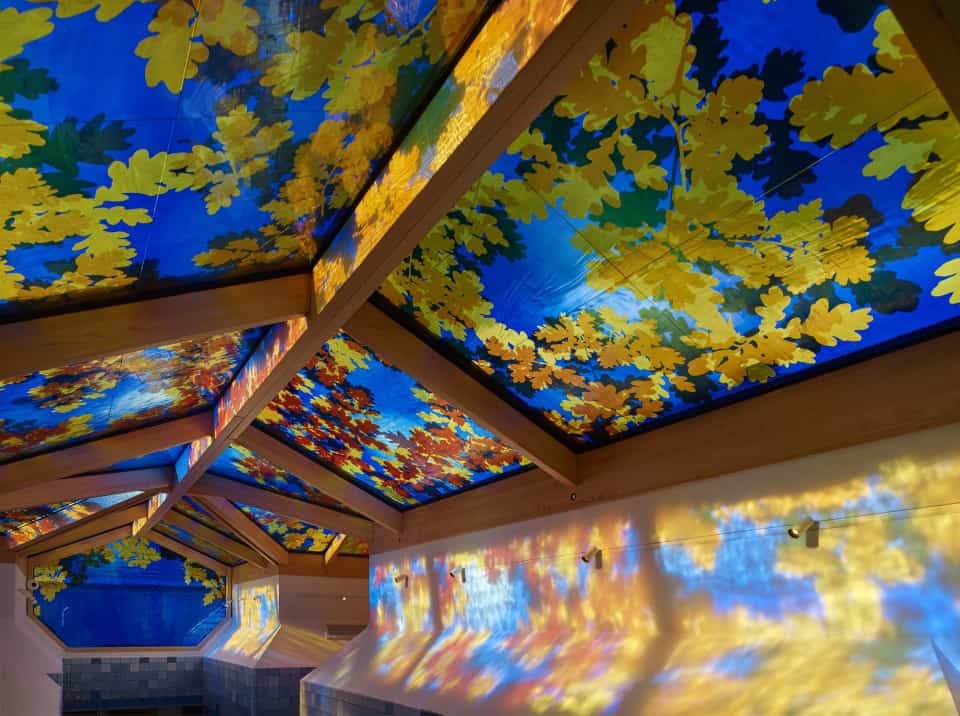
By Shira Wolfe
Stained Glass
Stained glass can traced as far back as Ancient Rome, when craftsmen started using coloured glass for their decorative wares. In the 7th century, glassmakers and artists started to create stained glass windows to adorn the interiors of churches, monasteries, abbeys, mosques and other place of worship around the world. The colours in stained glass are created by working with metallic oxides during the manufacturing process. By adding different additives, different hues can be produced. After cooling, the glass fragments are held in place by materials like lead, stone and copper foil.
Stained glass may have started out as a very particular craft undertaken by glassmakers and stained glass artists for places of worship, but artists from other fields also became fascinated with the artistic medium, likely seduced by the exalted place the medium has had in the spiritual lives of communities for centuries. Here, we feature 11 artists from the 19th century to today who created exceptional stained glass works of art. Some of these artists hold a key place in the history of art, while others are more marginal figures whose talent has been undervalued. Their stained glass masterpieces are a testament to the brilliance, originality and skill of these artists.

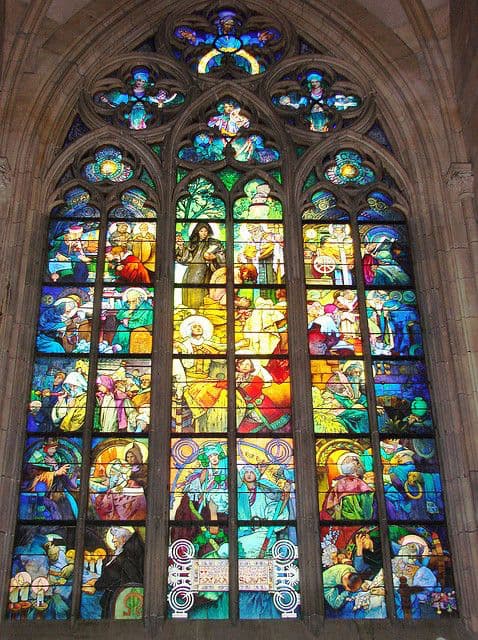
1. Alphonse Mucha
Alphonse Mucha (1860-1939), the great Czech Art Nouveau artist, designed the stained glass window in St. Vitas Cathedral in Prague. The stained glass window was installed in the north nave in 1931. The window portrays St. Wenceslas, the Czech patron saint, with his grandmother St. Ludmila in the centre. Around them are scenes from the lives of St. Cyril and St. Methodius, who spread Christianity among the Slavs.
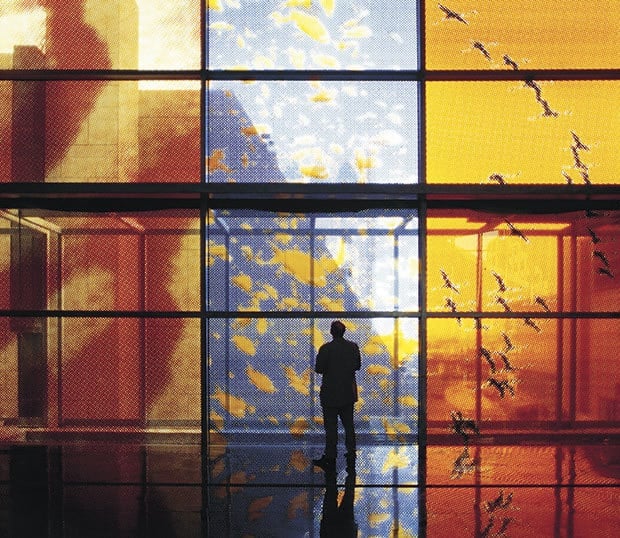
2. Brian Clarke
Brian Clarke (1953-) is a British artist who works towards challenging the place of stained glass in the creative hierarchy. According to Clarke: “Skilled craft is an entirely legitimate position to take when you look at the medium, but what’s really significant about stained glass is that it’s at the highest level of poetic achievement.” Friendships and collaborations with notable architects such as Zaha Hadid and Norman Foster are important markers in his career. He collaborated with Foster to create a vast stained glass wall for the Al Faisaliah Center skyscraper in Riyadh, Saudi Arabia and describes the project as a type of cinema with fish moving through water and birds flying through the air. For his stained glass screens, he again creates a type of cinematic drama drawing inspiration from the botanical, cosmological and biographical – with subject material ranging from flowers and birds to atomic bomb clouds.
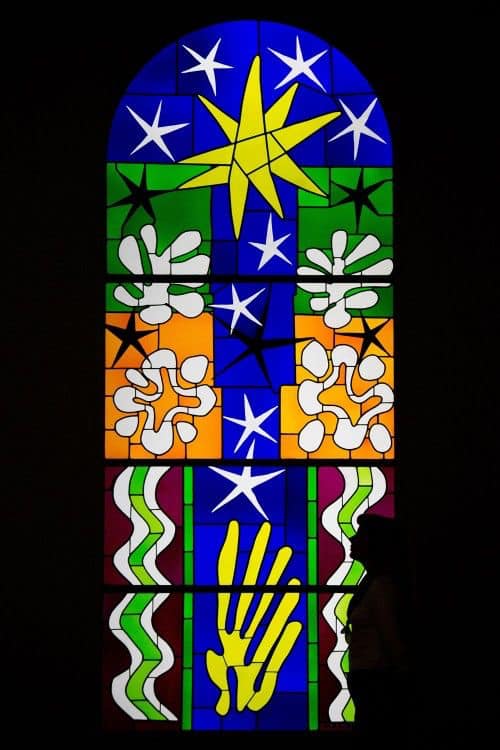
3. Henri Matisse
Towards the end of his life, Henri Matisse (1869-1954) was confined to a wheelchair and had turned to paper cut-outs, which he called découpages, as his favoured artistic medium. He made his cut-out works with the help of assistants. In this period, he also started making designs for stained glass windows. He was commissioned by the Time Life Company to design a window for the Rockefeller Center, which was installed in 1952. For this colourful work, Matisse sent his brightly coloured cut-outs to a stained glass craftsman, who executed the work. Matisse called the window Nuit de Noël (Christmas Eve).
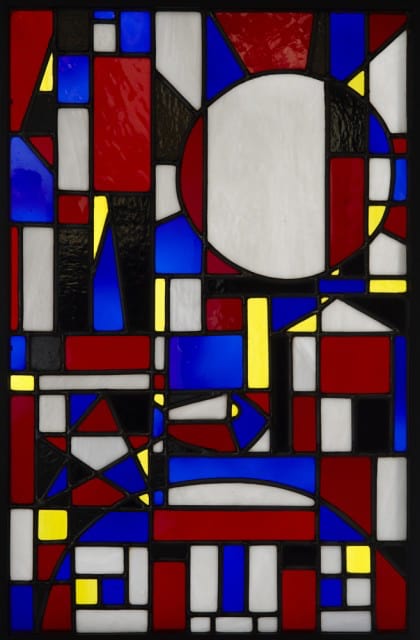
4. Joaquín Torres-García
Uruguayan artist Joaquín Torres-García (1874-1949) pioneered a style called Constructive Universalism. For him, the origins of art could be found in Pre-Colombian art. He met De Stijl artists Theo van Doesberg and Piet Mondrian in Paris, and connected with them over art’s universal power of expression. Torres-García used symbols and pictograms such as the sun, stars, people, houses, fish, and boats. Torres-García worked with Antoni Gaudí on the stained glass windows in Barcelona’s Sagrada Família. Upon his return to Uruguay, he made the stained glass window Constructivist Glass (1948), which, with its geometric abstraction and symbols including a fish, a house and the sun, is an example of his unique Constructive Universalism language.
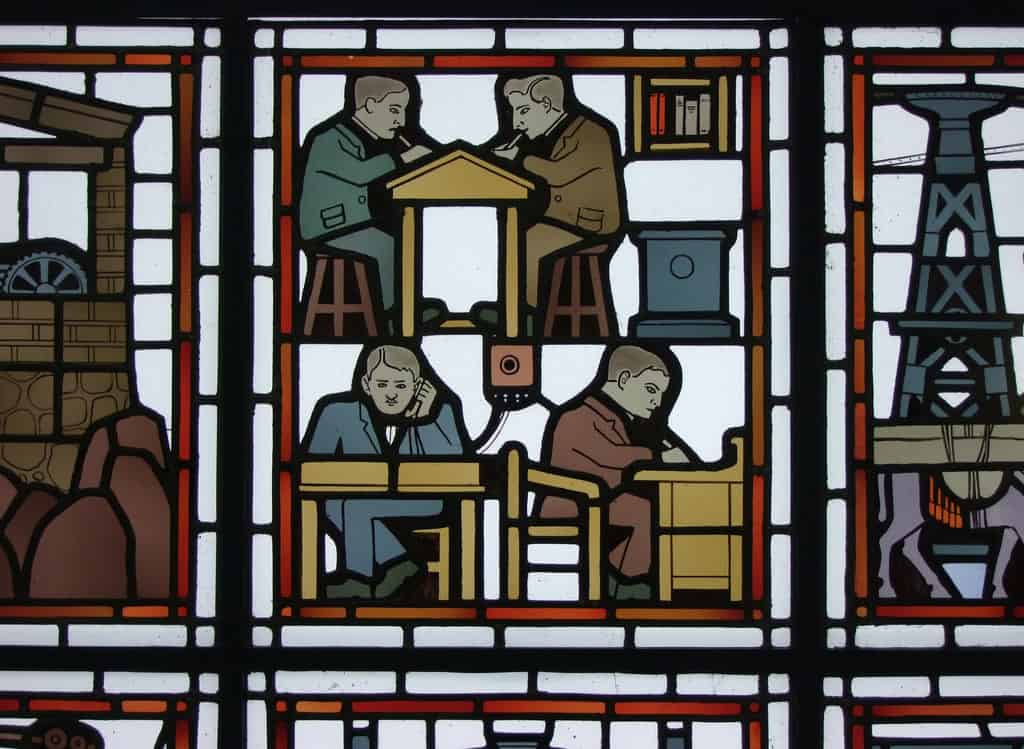
5. Bart van der Leck
The Dutch artist Bart van der Leck (1876-1958) was a member of De Stijl. He created stunning works in this style using primary colours and geometric forms while still working in a representational manner. In 1914, Van der Leck was commissioned to create a large stained glass window for the headquarters of Wm H. Müller & Co in The Hague, which was the business of his patron Helene Kröller-Müller and her husband Anton Kröller. The piece is emblematic of Dutch modernism.
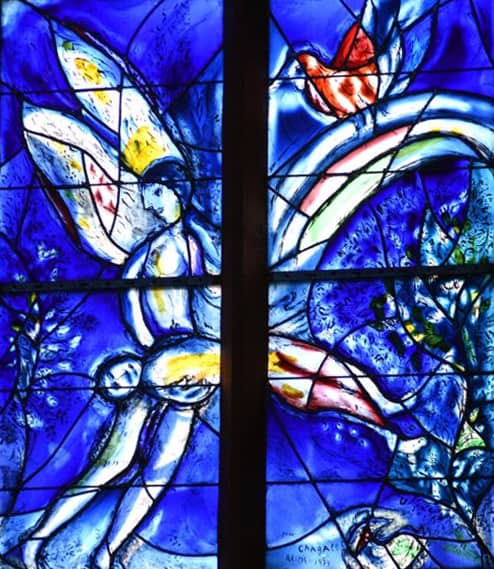
6. Marc Chagall
Marc Chagall (1887-1985) started working with stained glass late in his career. He designed a window at the Metz Cathedral in France, a series of 12 windows at the Hadassah-Hebrew University Medical Center in Jerusalem, the “Peace Window” at the United Nations Building in New York City, the “America Windows” for the Art Institute of Chicago, and stained glass windows for St. Stephan’s Church in Mainz, Germany. Chagall used 18 shades of blue for these windows, reflecting “heaven in all variations,” and portrayed many Biblical themes. In his stained glass work, Chagall worked together with his collaborator and friend, the glassworks master Charles Marq.
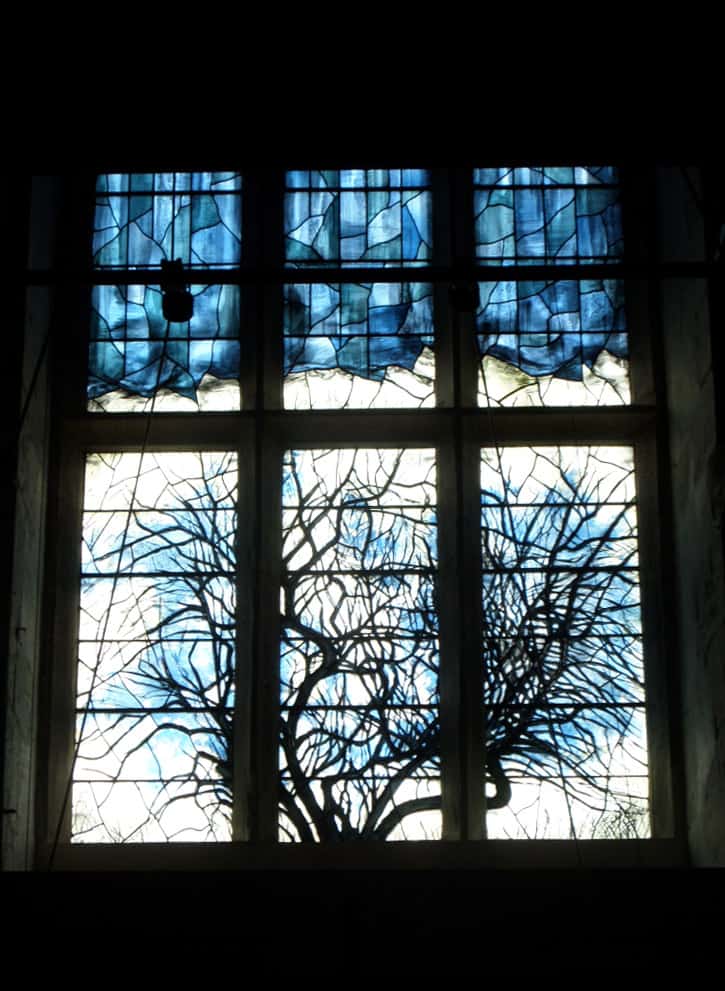
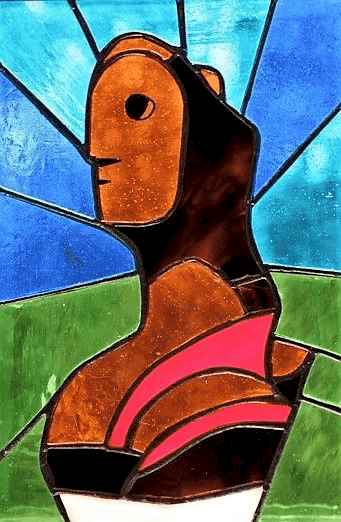
7. Henry Moore
Henry Moore (1898-1986) is one of the most famous sculptors of the 20th century and is mostly known for his distinctive sculptures. However, Moore also worked across other mediums, and even created a handful of beautiful stained glass works. Moore’s hand can be traced back to The Tree of Life, a modern stained glass window created following Moore’s etching of a tree. The window is located in St. Andrew’s Much Hadham Church in Moore’s town of residence, Much Hadham. Additionally, this stained glass head of a girl reveals Moore’s unmistakable solid yet sensitive style.
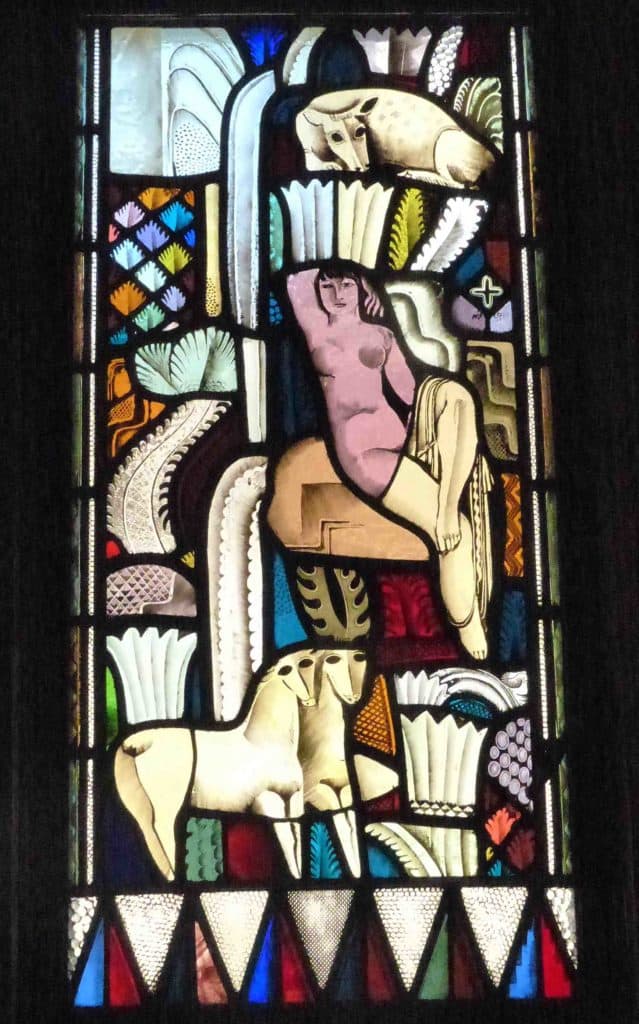
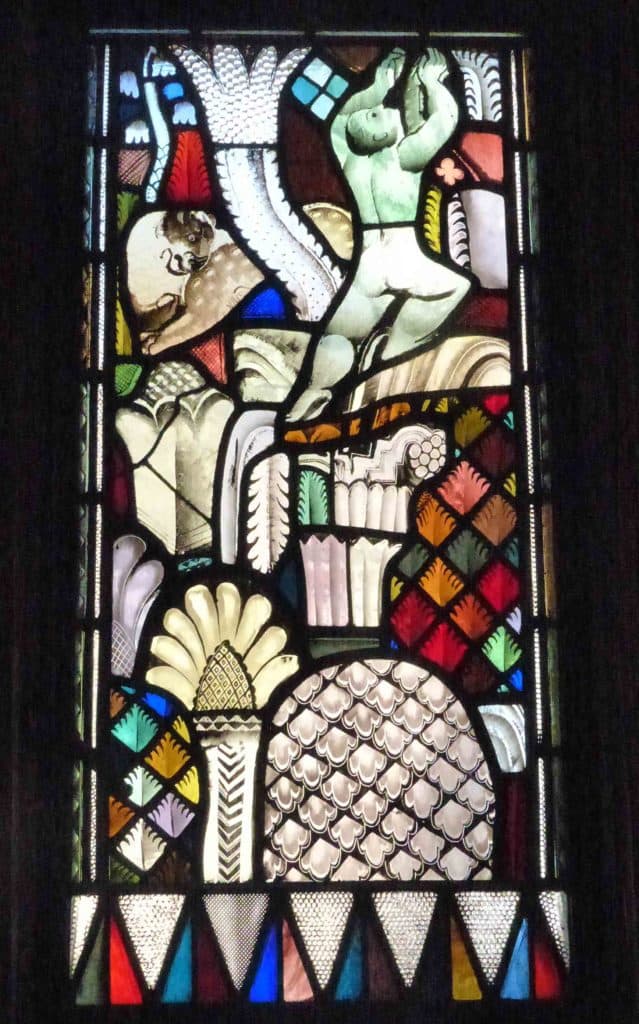
8. Edgar Miller
Chicago-artist Edgar Miller (1899-1993) was a prolific artist working across many different mediums, including painting, sculpture, stained glass, architecture, interior design, printmaking and graphic design. Though a skilled craftsman and talented artist who worked around the clock, Miller never became widely known in the art world. Yet his stained glass windows can be counted among the most distinctive stained glass works of the 20th century. Miller was interested in representation as something that would tie people together, sharing an understanding of the things around us. His stained glass designs are a testament to this, while retaining a clean modernist approach to the sensual and strong figures and shapes.
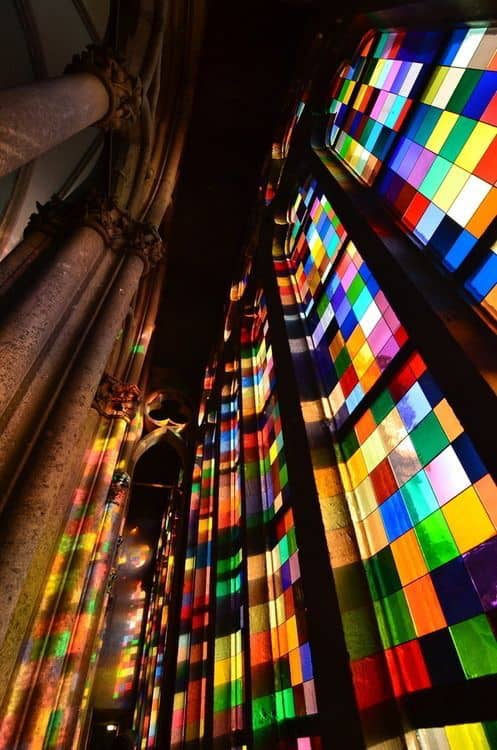
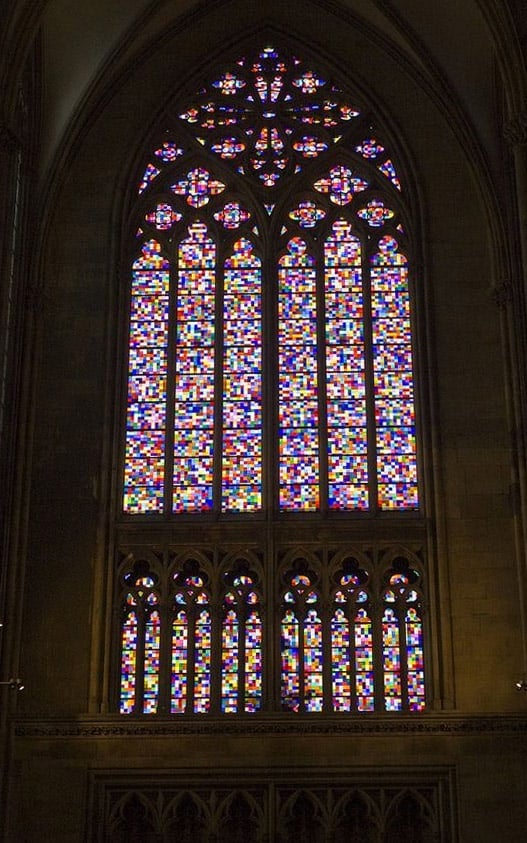
9. Gerhard Richter
Renowned German artist Gerhard Richter (1932-) was commissioned to design a 75-foot-tall window for the Cologne Cathedral. While working on the design, he accidentally placed a Gothic window frame template on top of one of his colour grid paintings. This led to Richter’s stained glass window in the cathedral, consisting of approximately 11,500 squares little squares in 72 different colours, in a pattern determined by a mathematical formula.
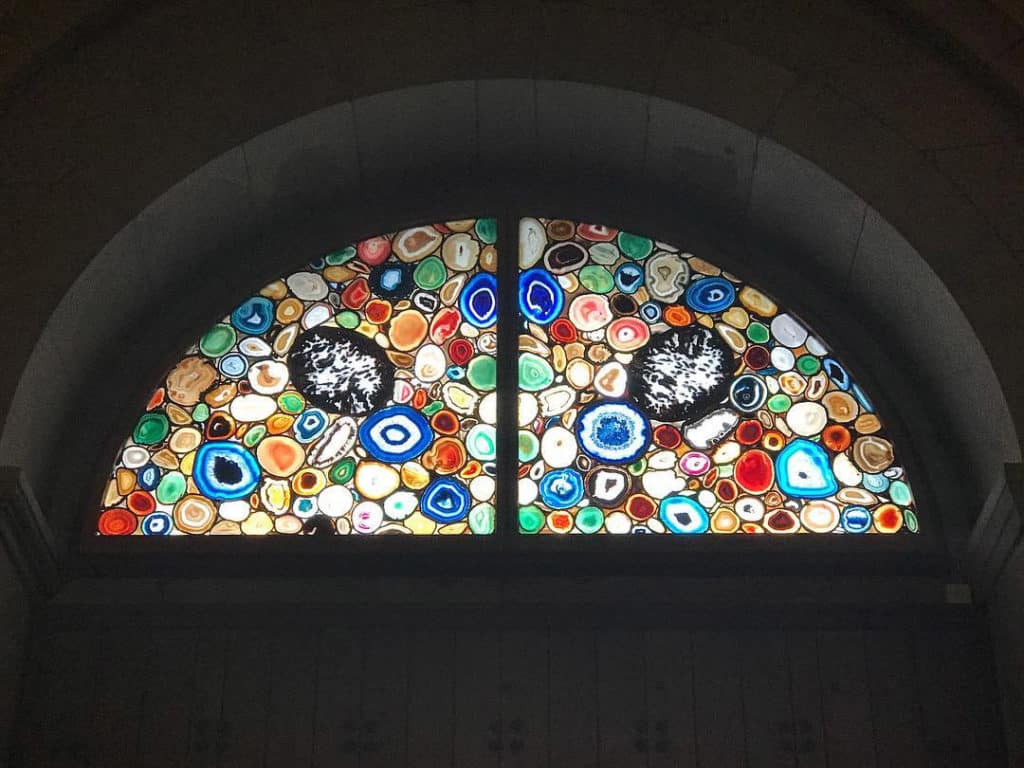
10. Sigmar Polke
German painter Sigmar Polke (1941-2010) is responsible for the stained glass windows adorning Zurich’s Grossmünster Church since 2009. Polke’s stained glass actually consists of agate stones cut into thin slices, which let the light pass through them to reveal beautiful colours and shapes. He later added five figurative glass windows with motives from the Old Testament.
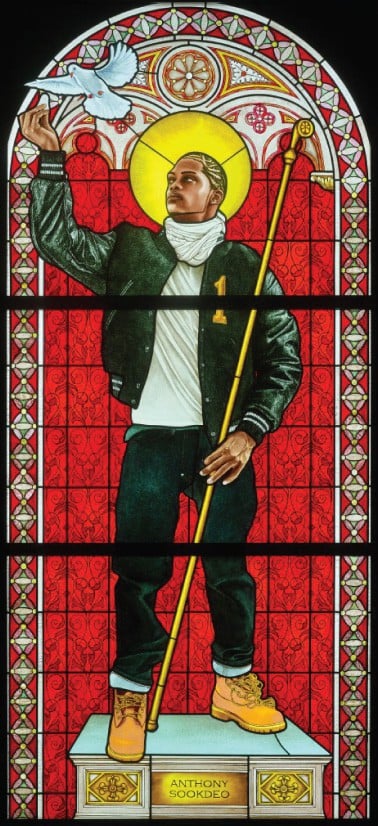
11. Kehinde Wiley
Kehinde Wiley (1977-), the artist known for his vibrant and highly naturalistic portraits of black people in contemporary dress posing in the stately manner of Baroque portraiture and for painting Barack Obama’s official portrait, has also taken on the stained glass medium. In his paintings, Wiley frequently reinvents the traditional imagery associated with the religious and mythological themes of Western European history painting, with contemporary black men and women in the stead of ancient regime protagonists. The same goes for his stained glass work. Instead of the typical saints and bishops, Wiley replaced them with young black men wearing their everyday street clothes – hoodies, jeans and Timberland boots. In Saint Remi, Anthony Sookdeo holds a scepter and releases a dove, a golden halo around his head.
Relevant sources to learn more
Read about the other artistic output of these artists in the following Artland articles:
Understanding Glass Art & its Techniques
Art Movement: Art Nouveau
The History of Collage in Art